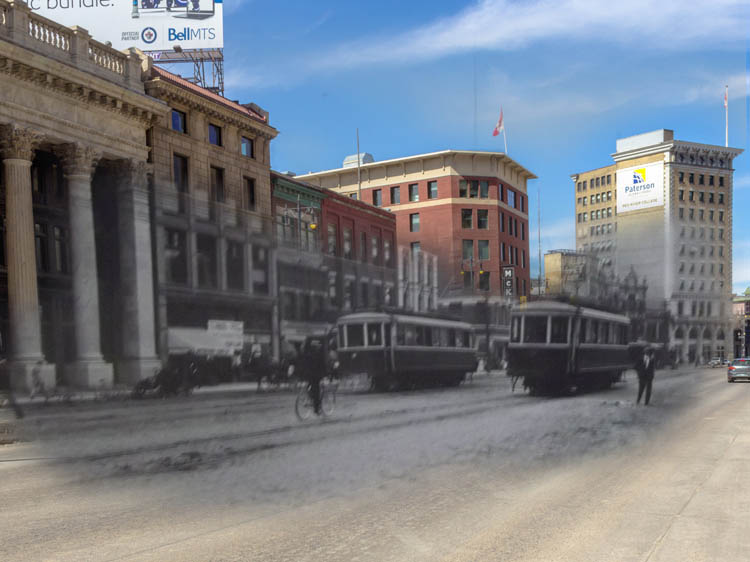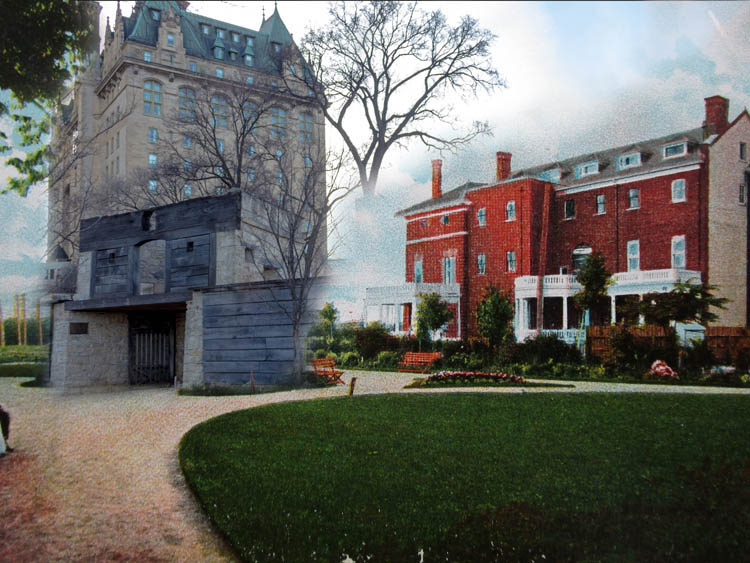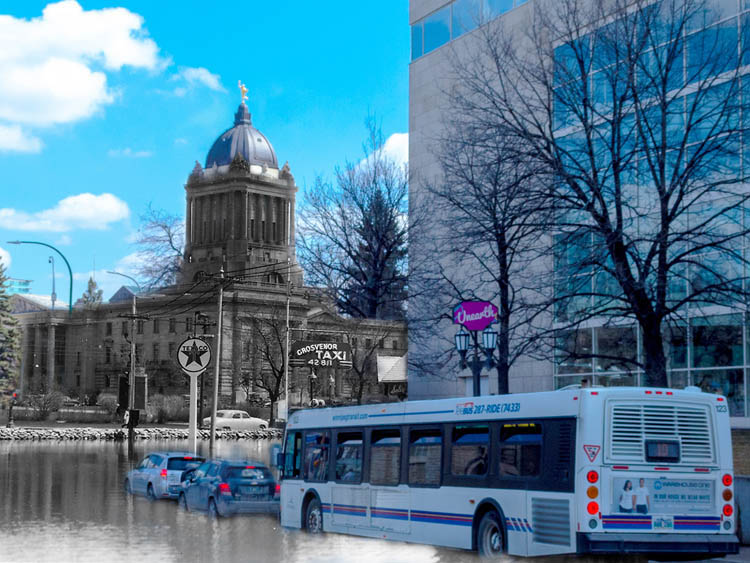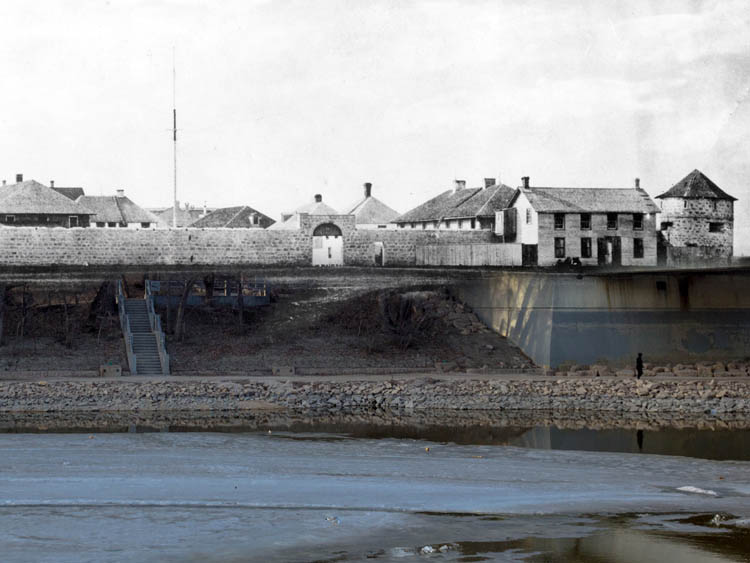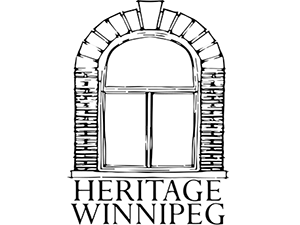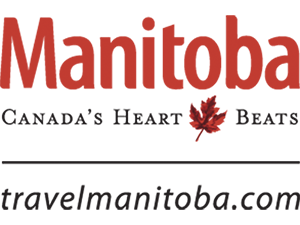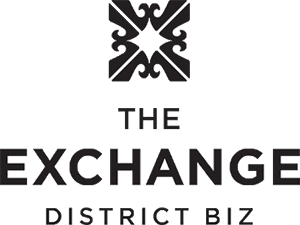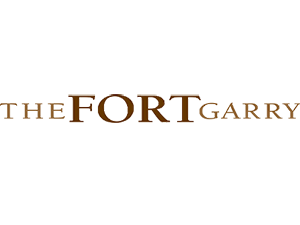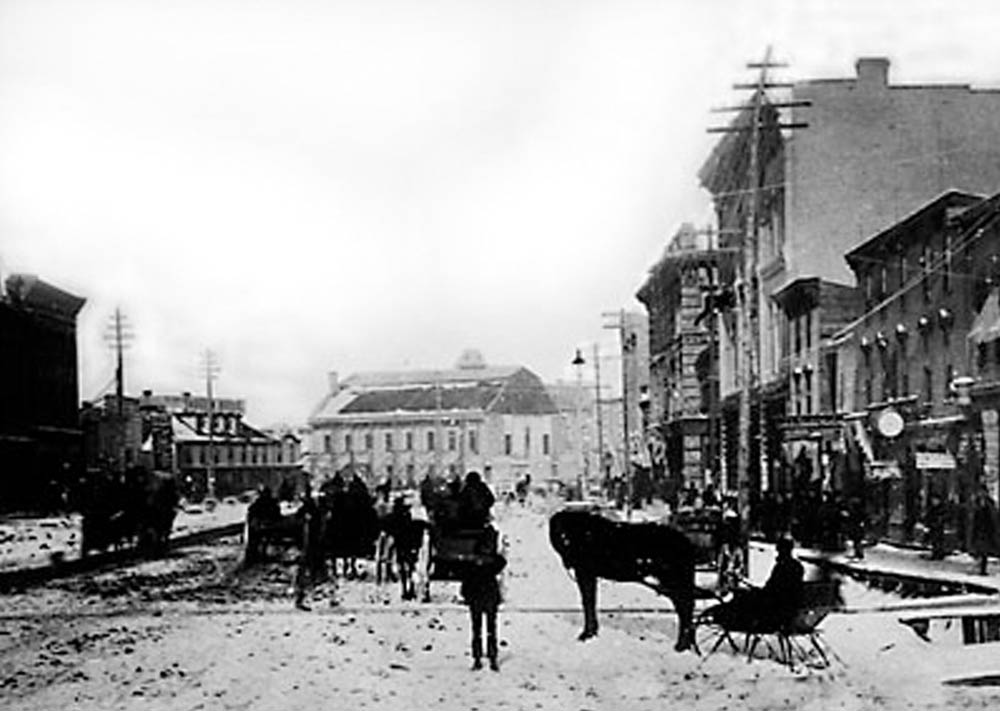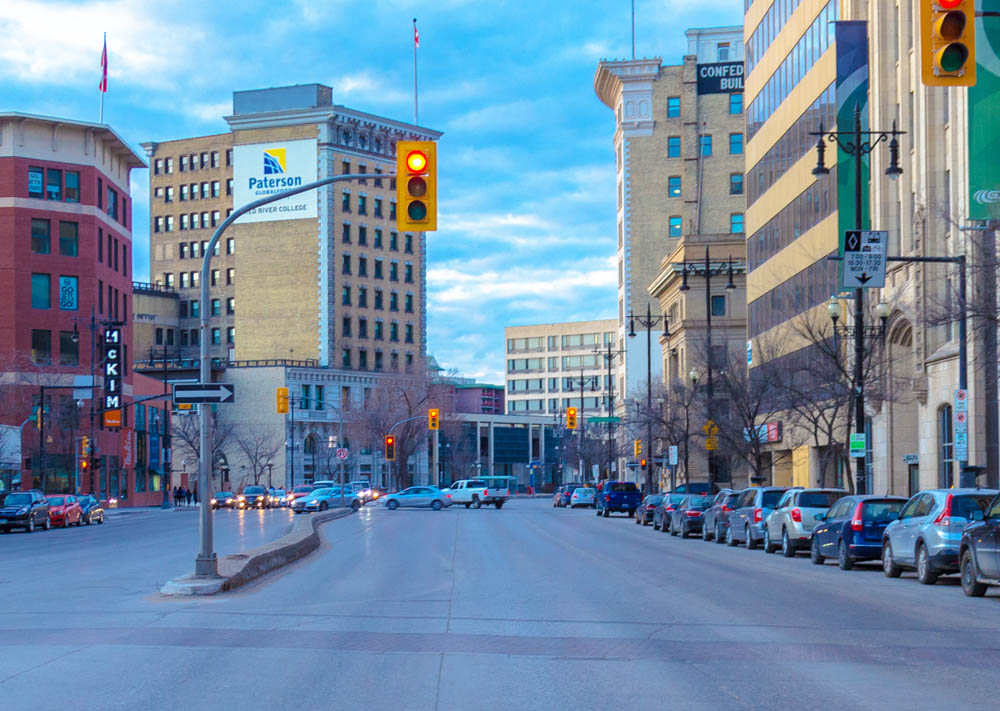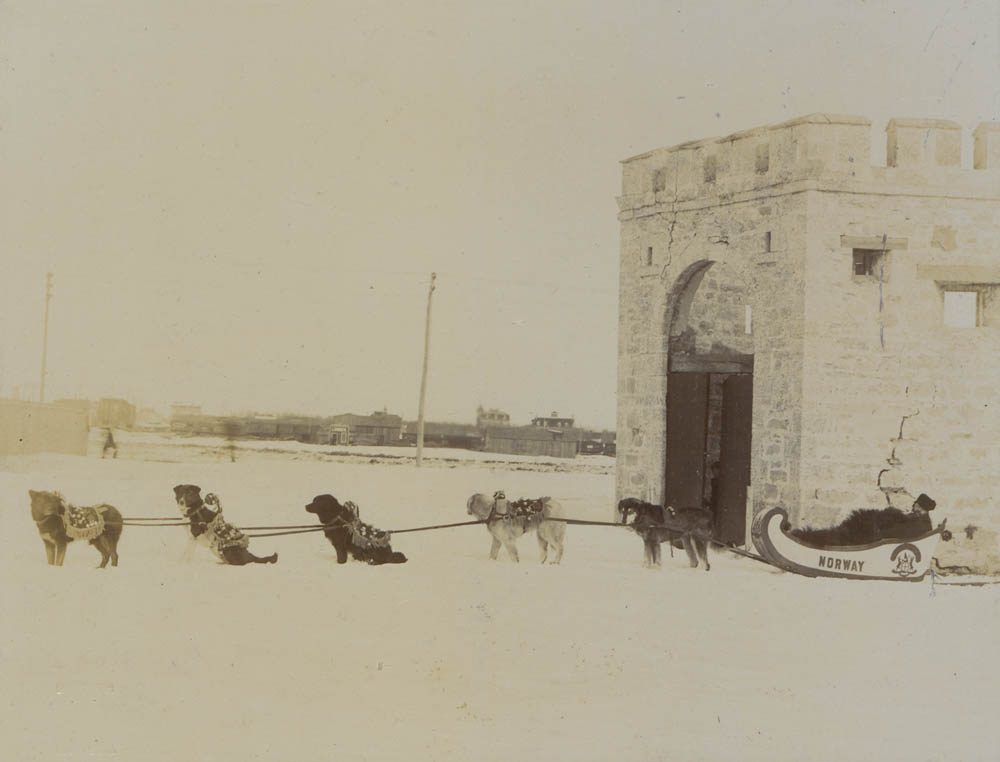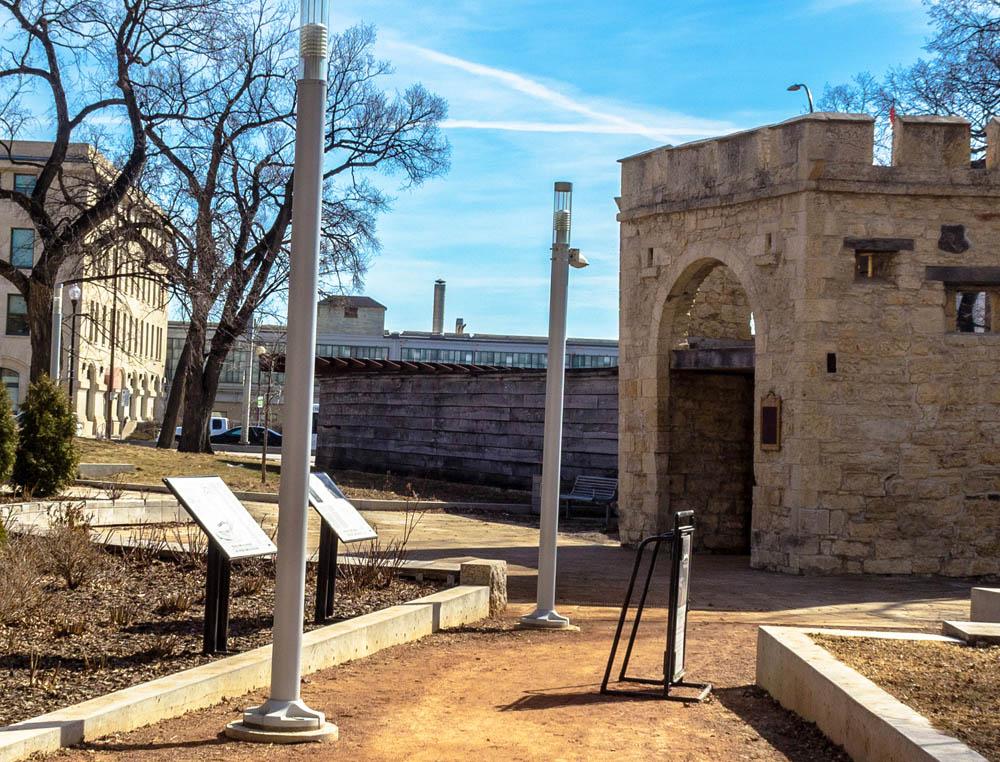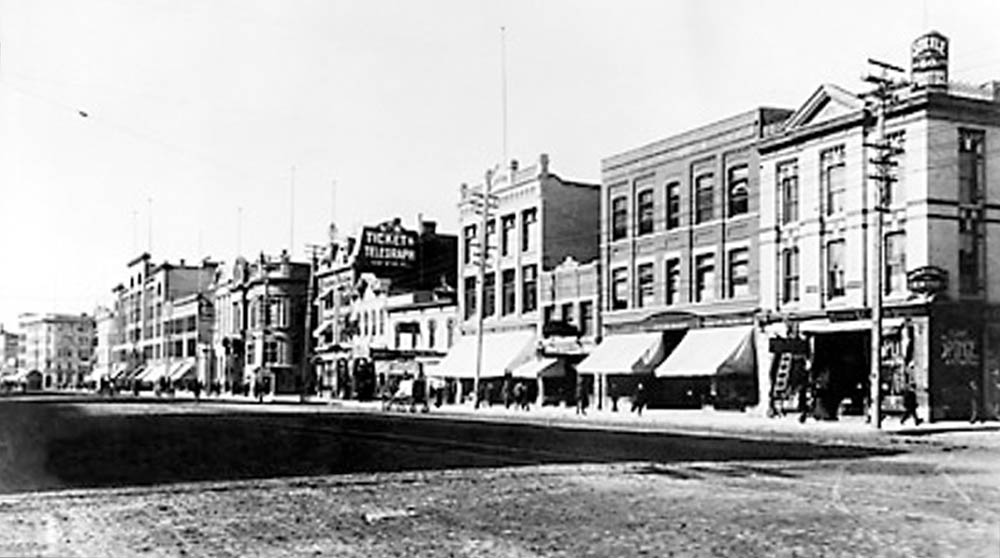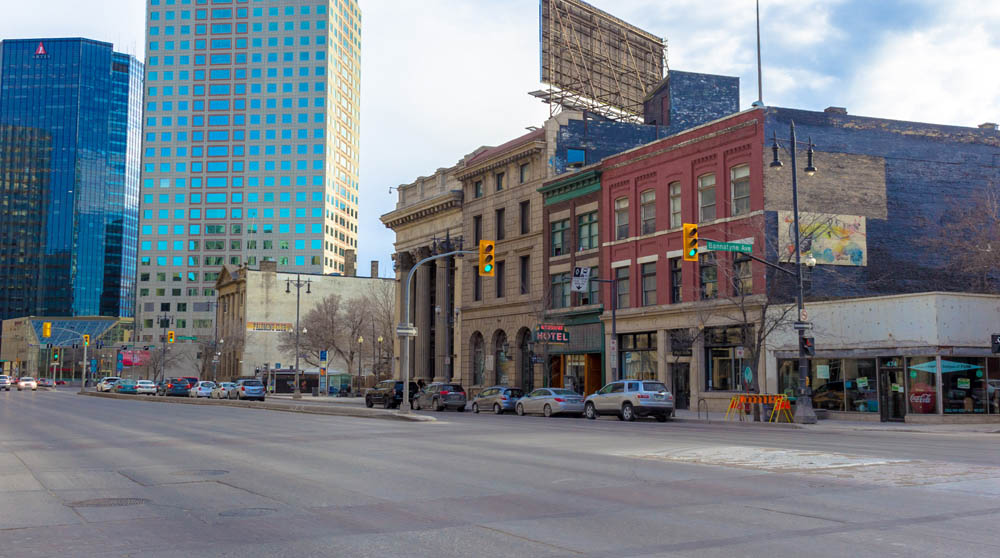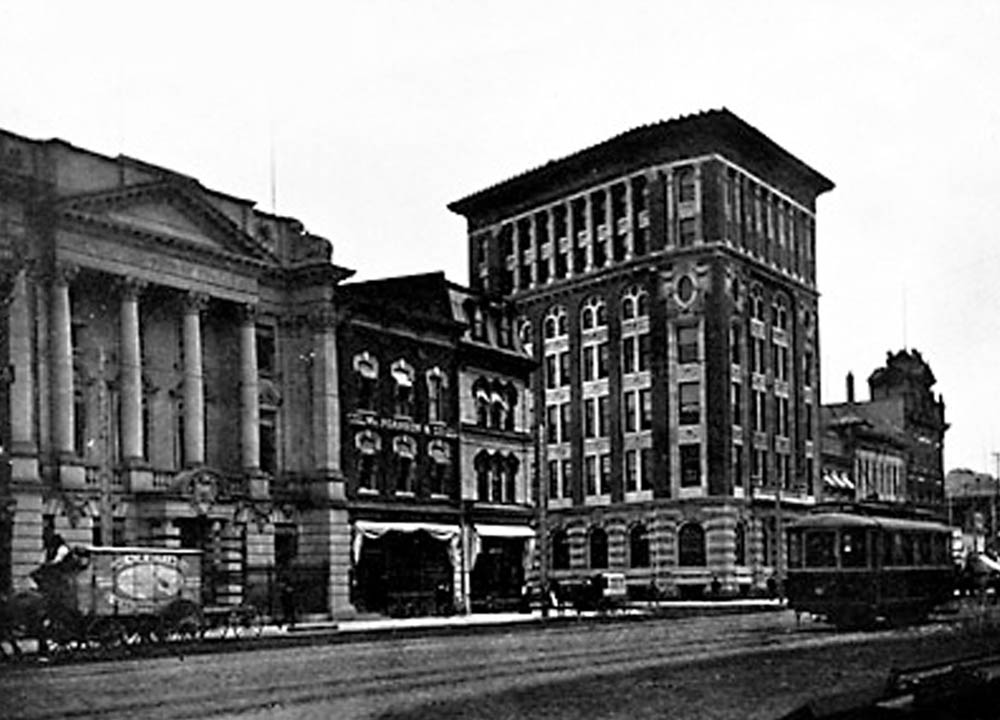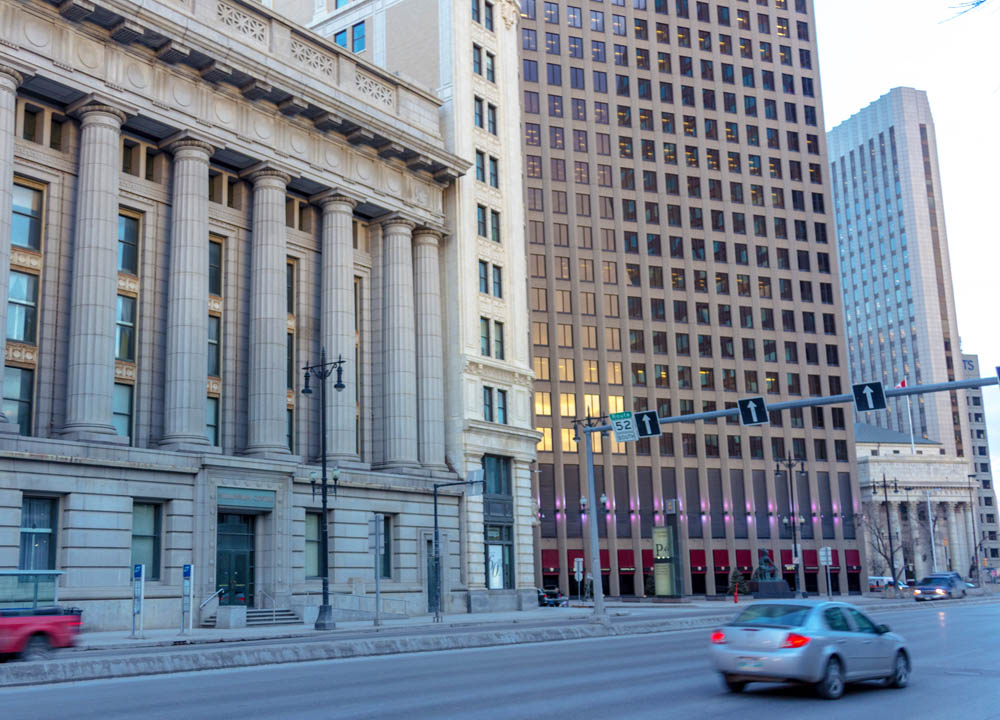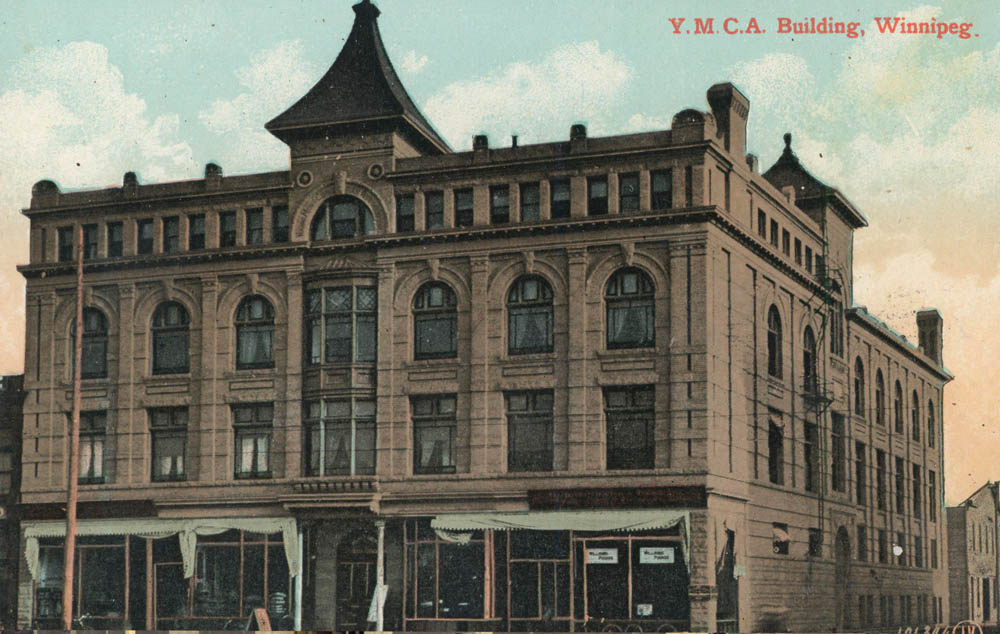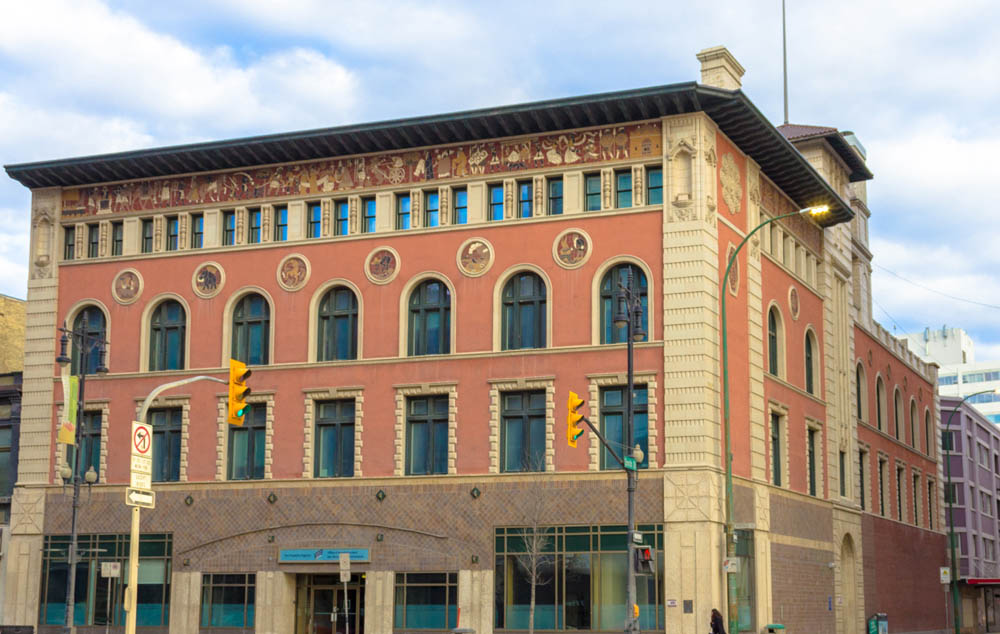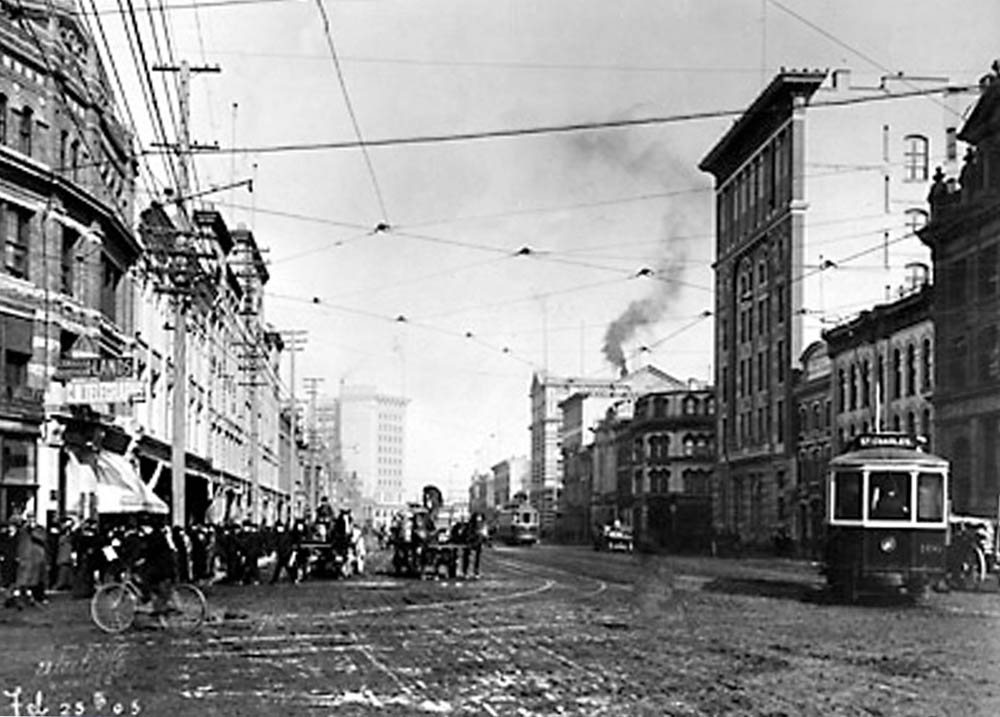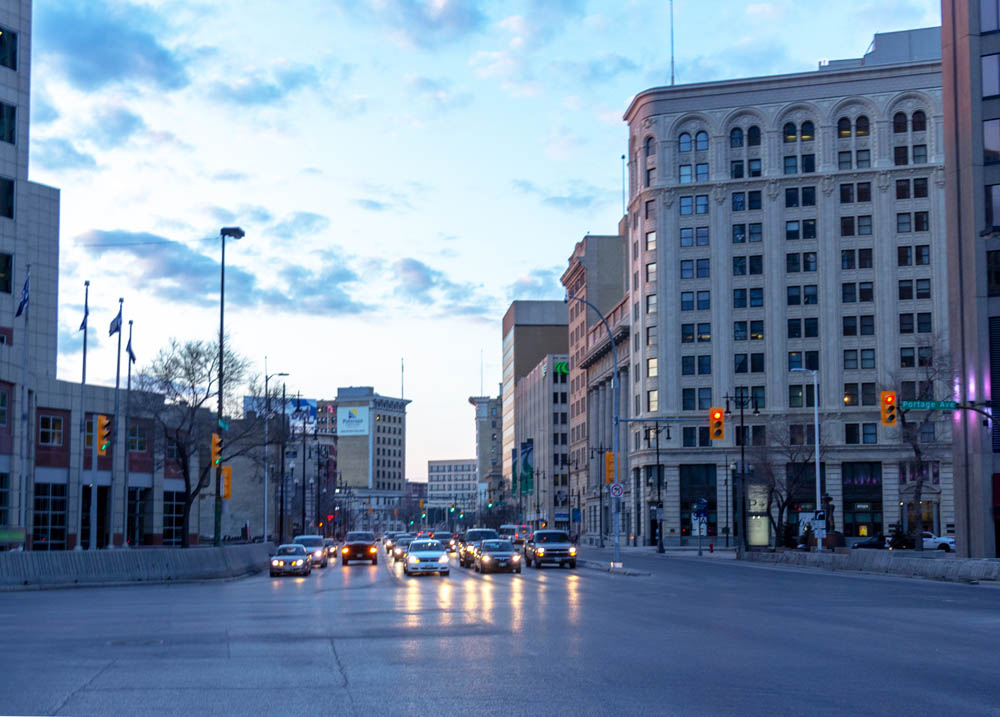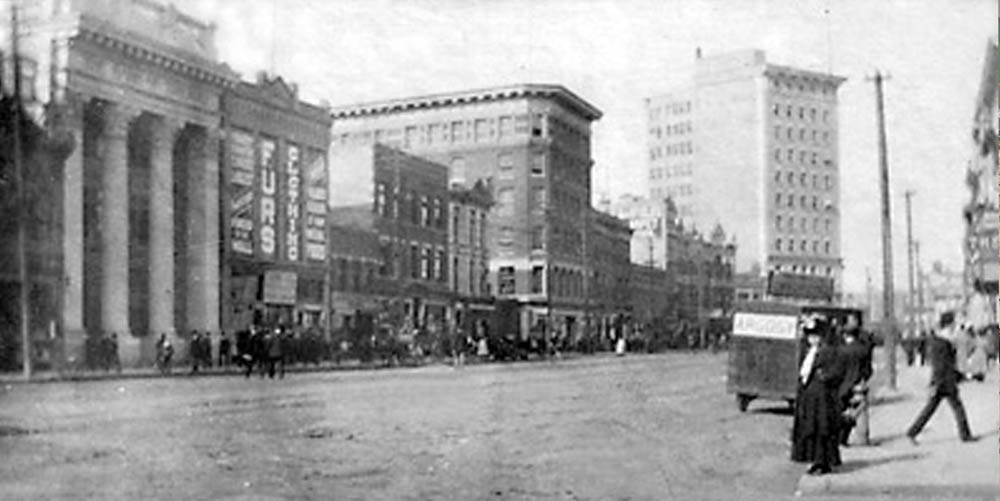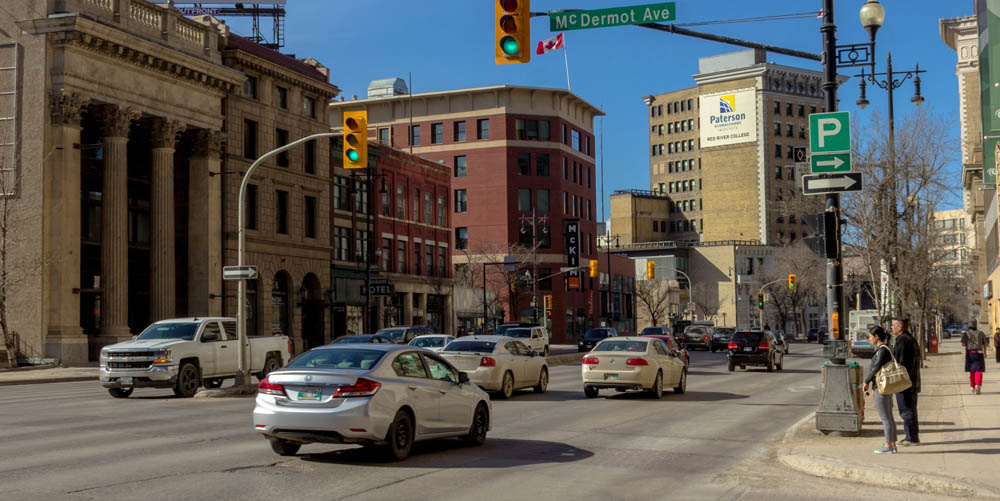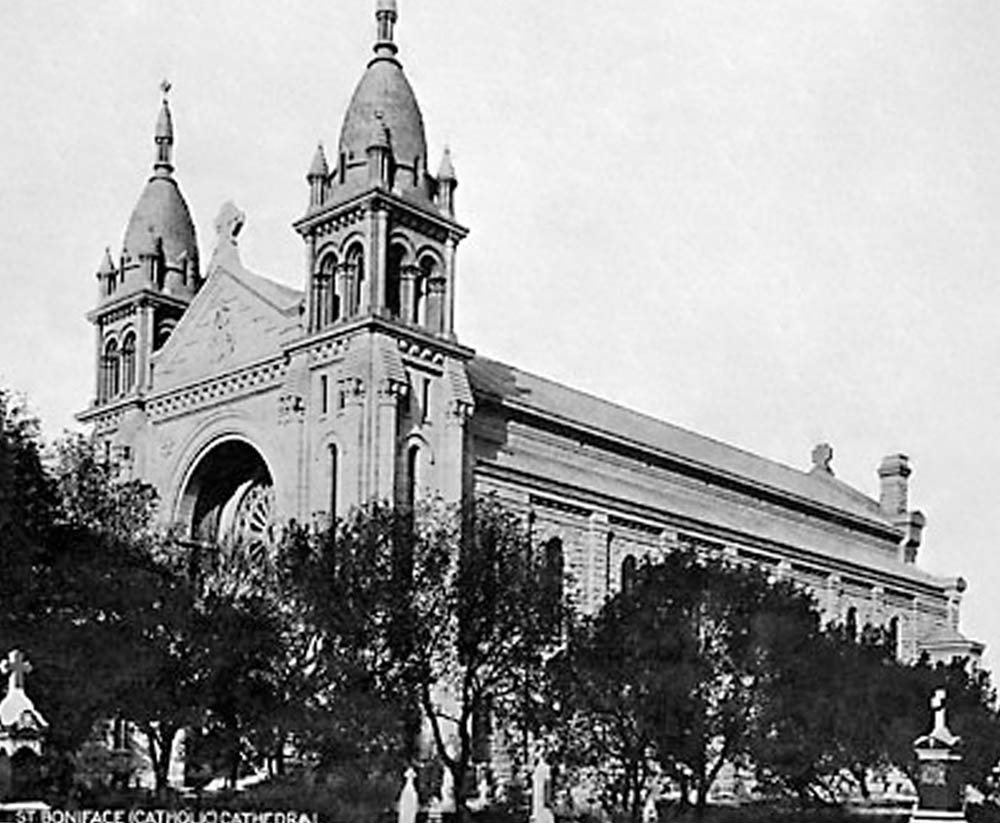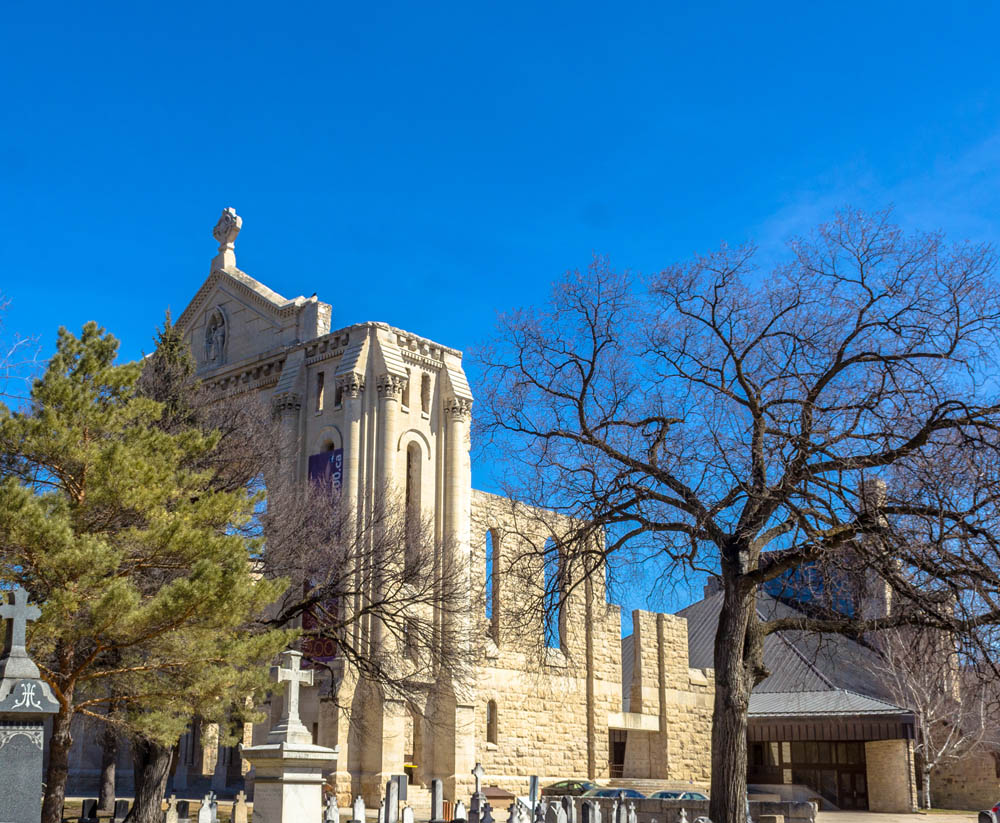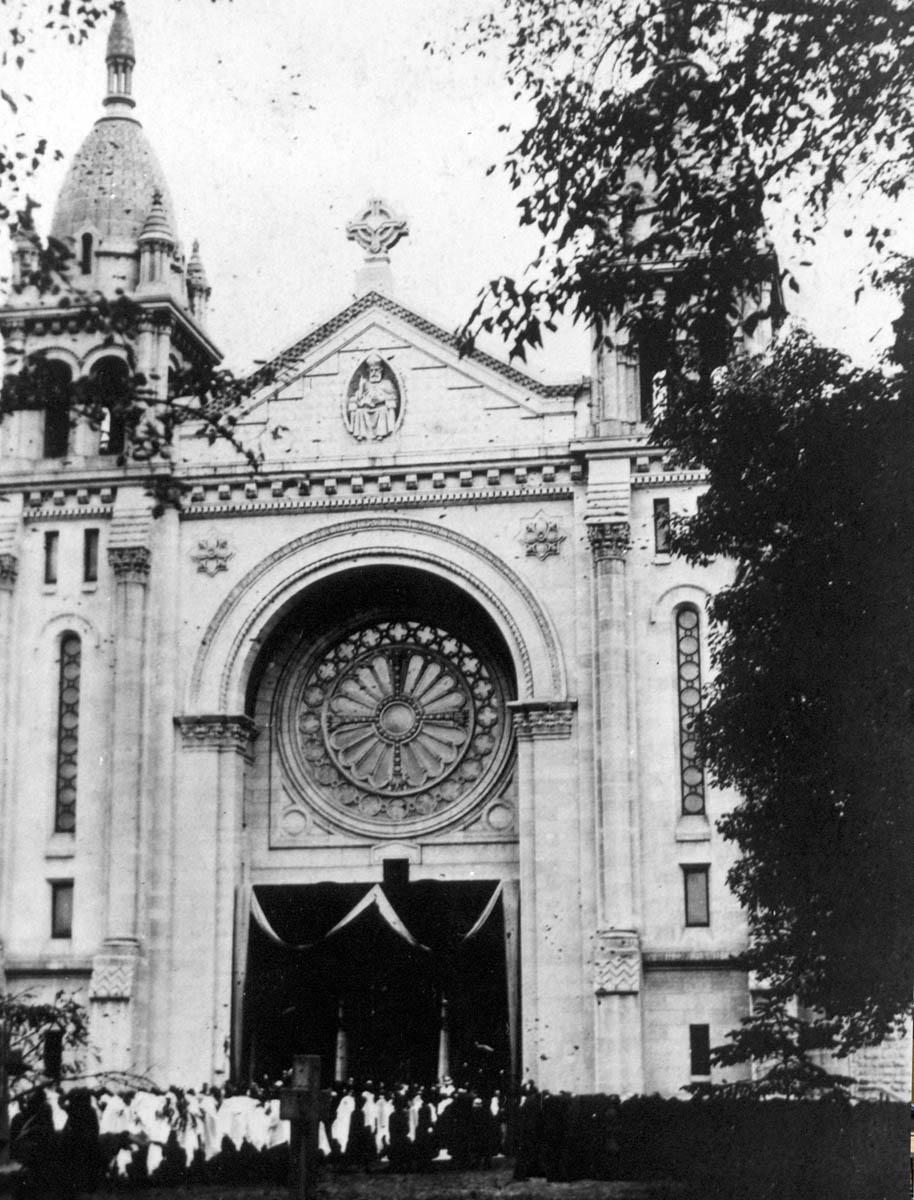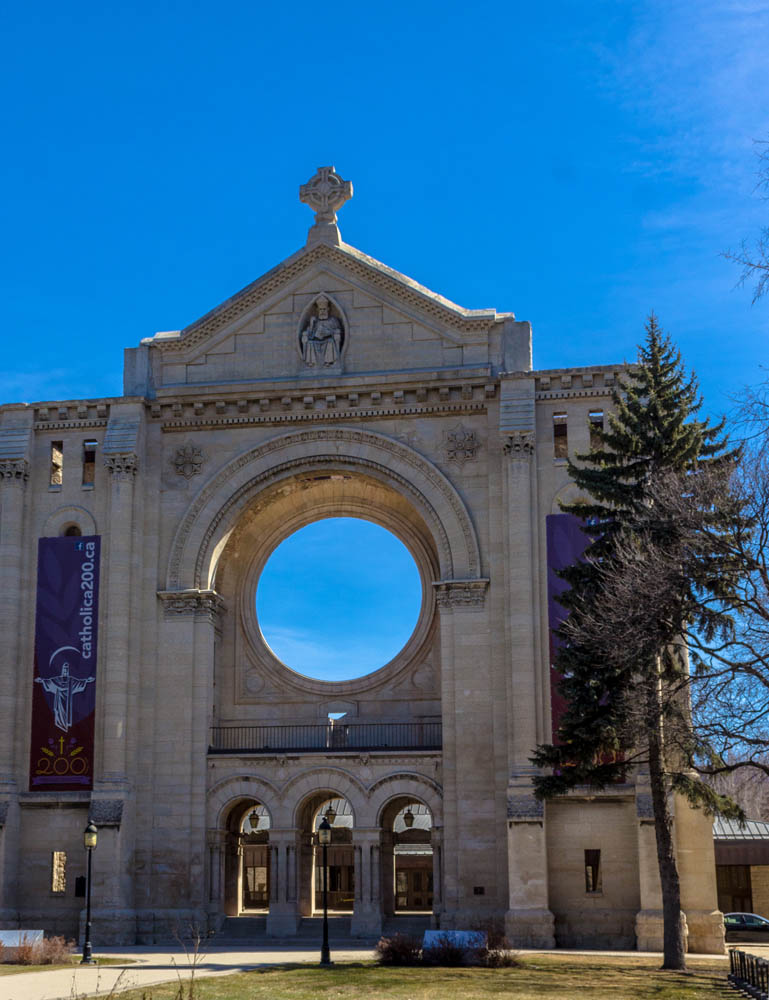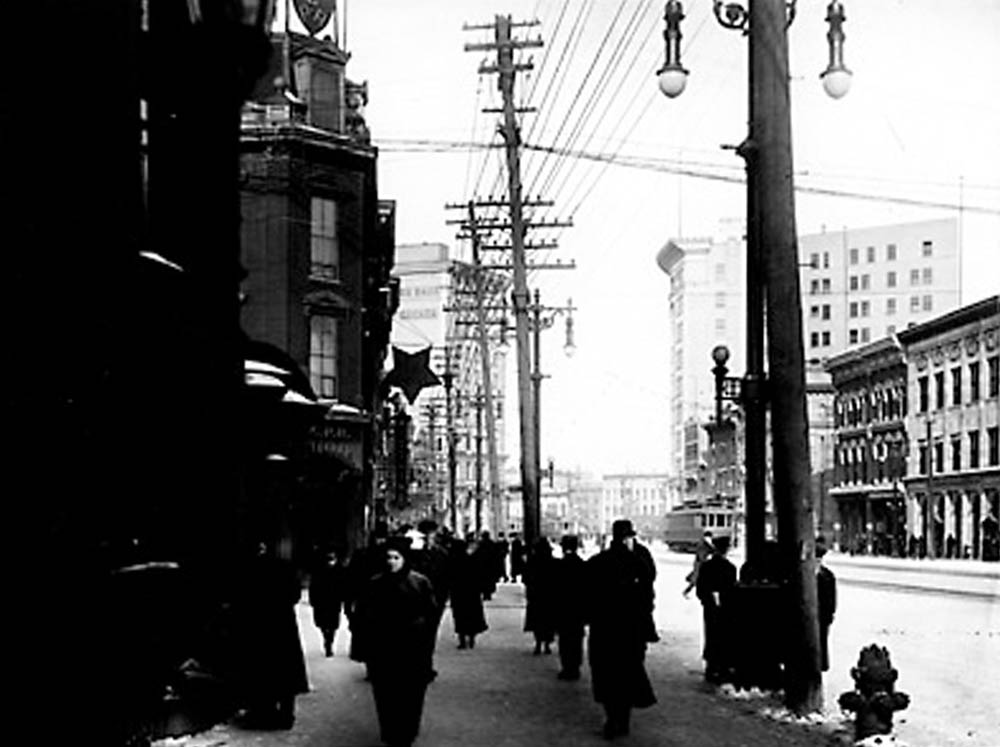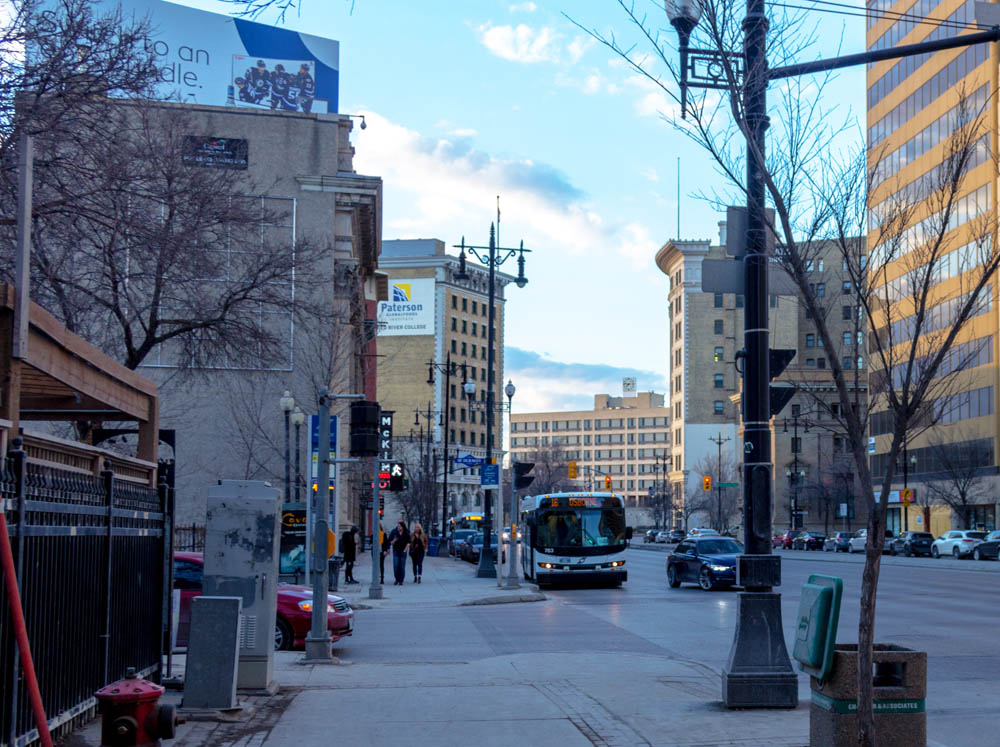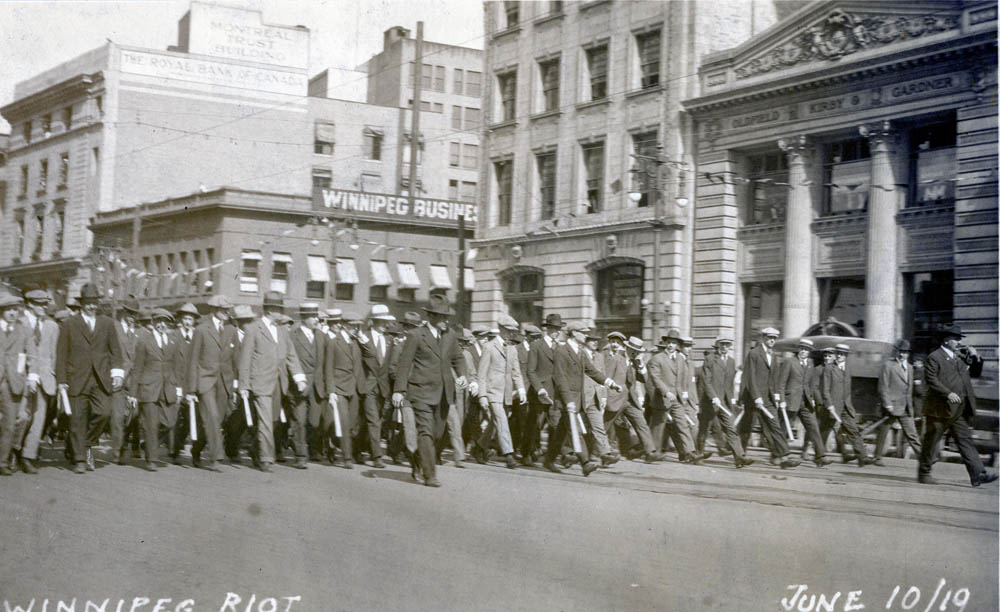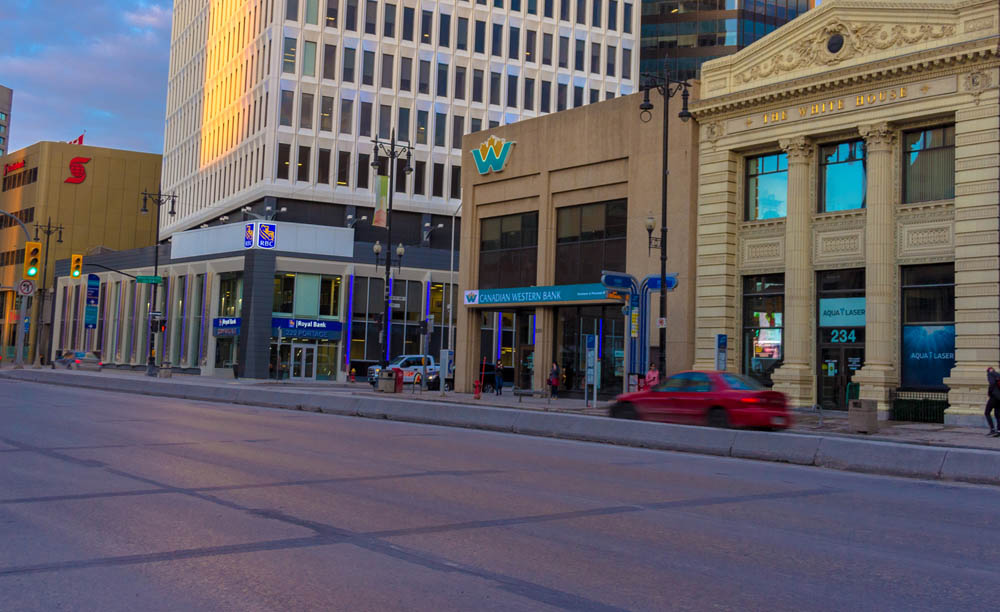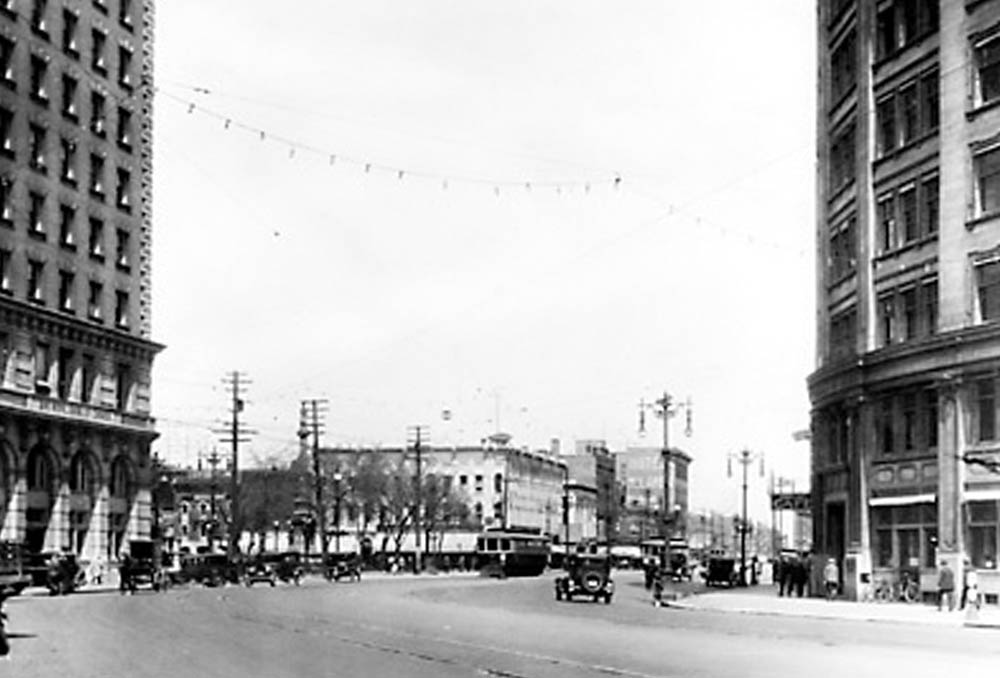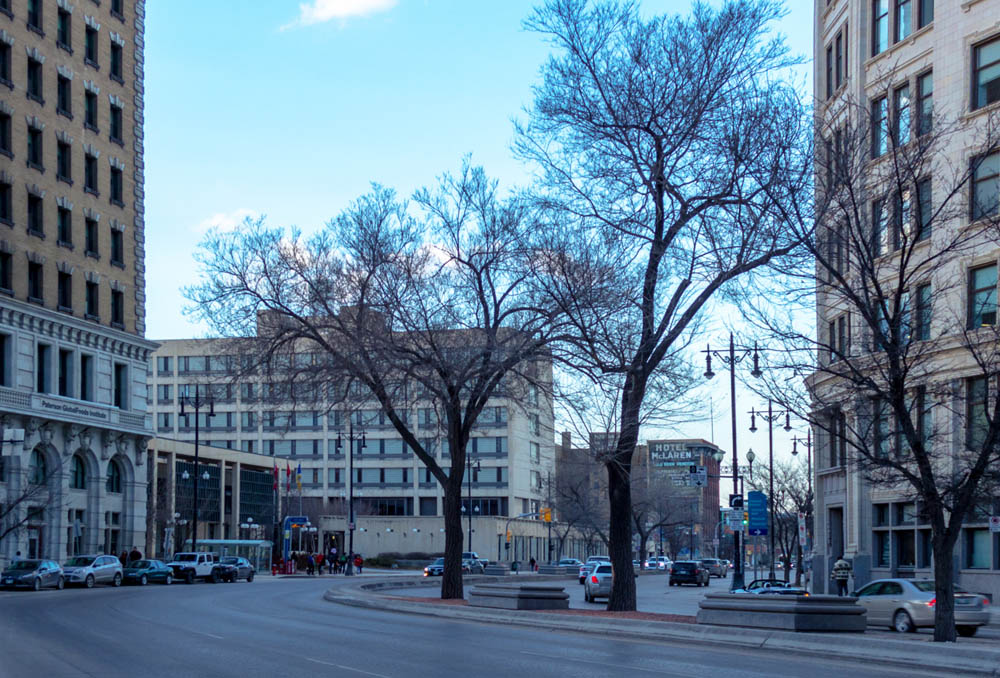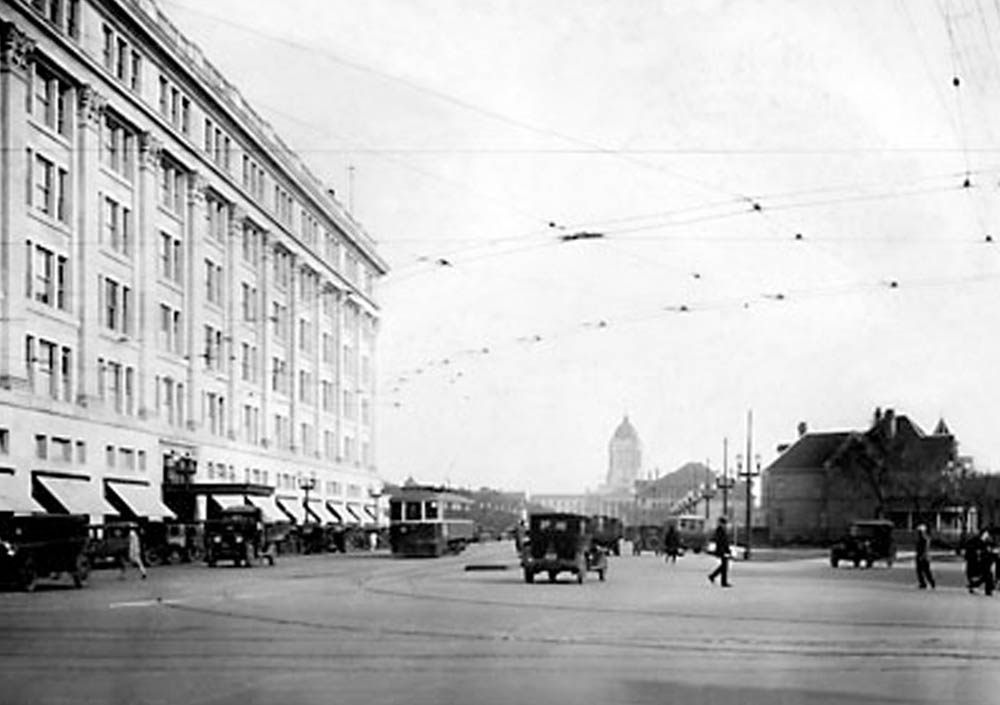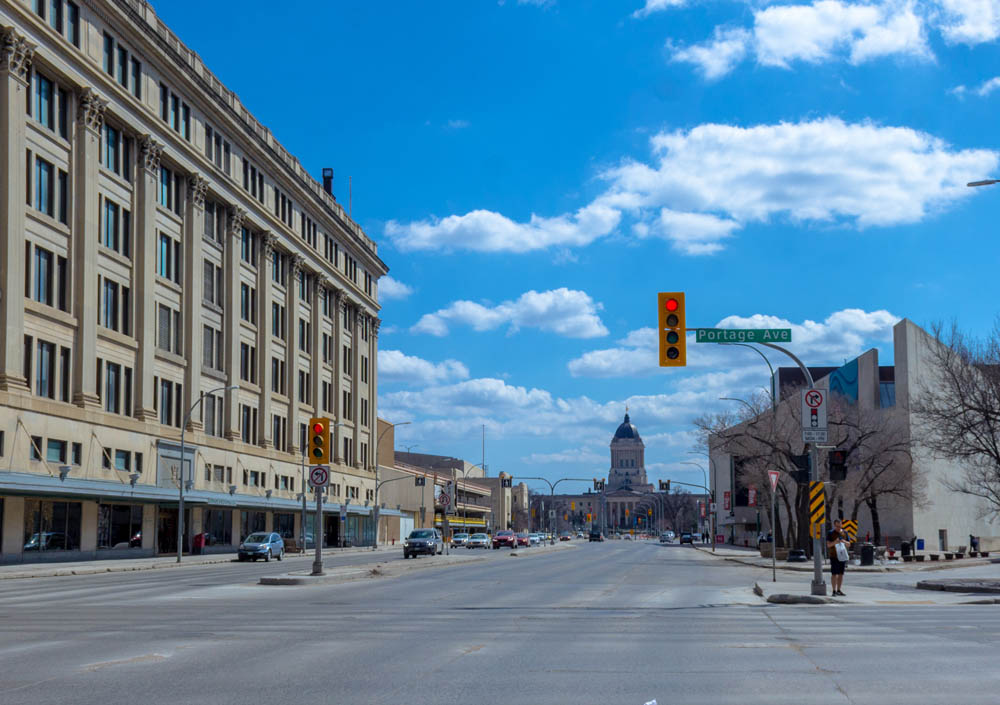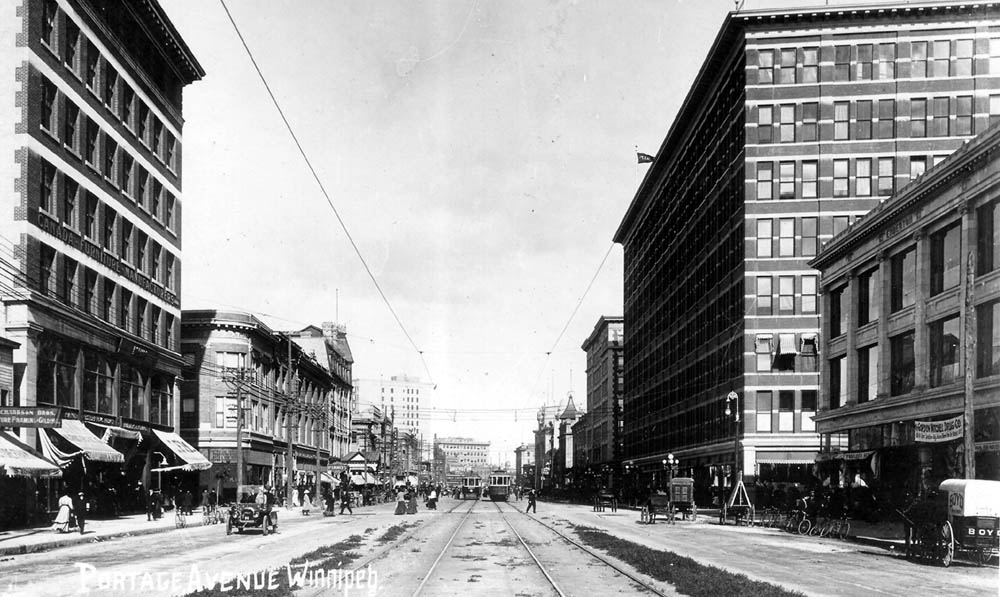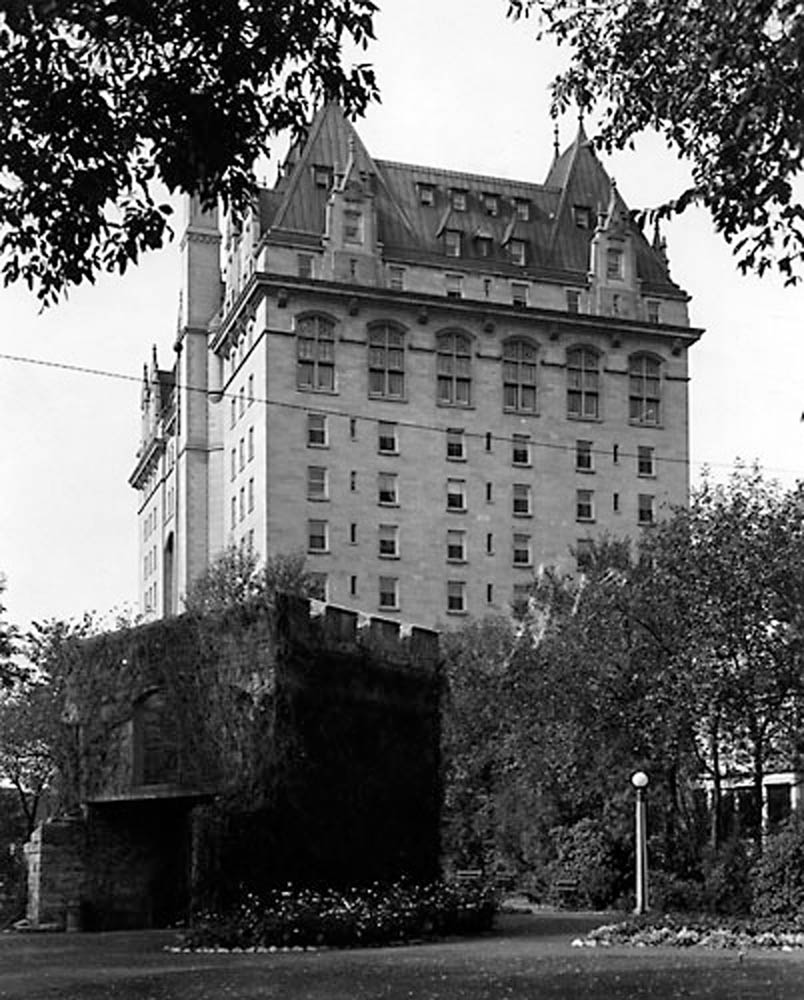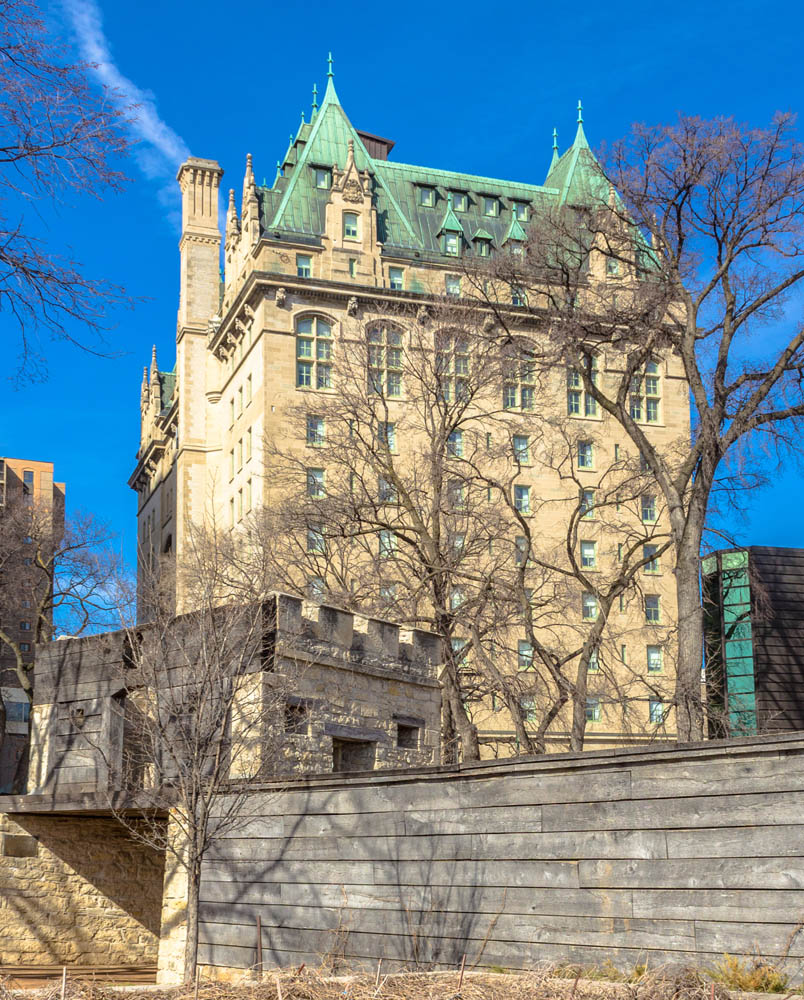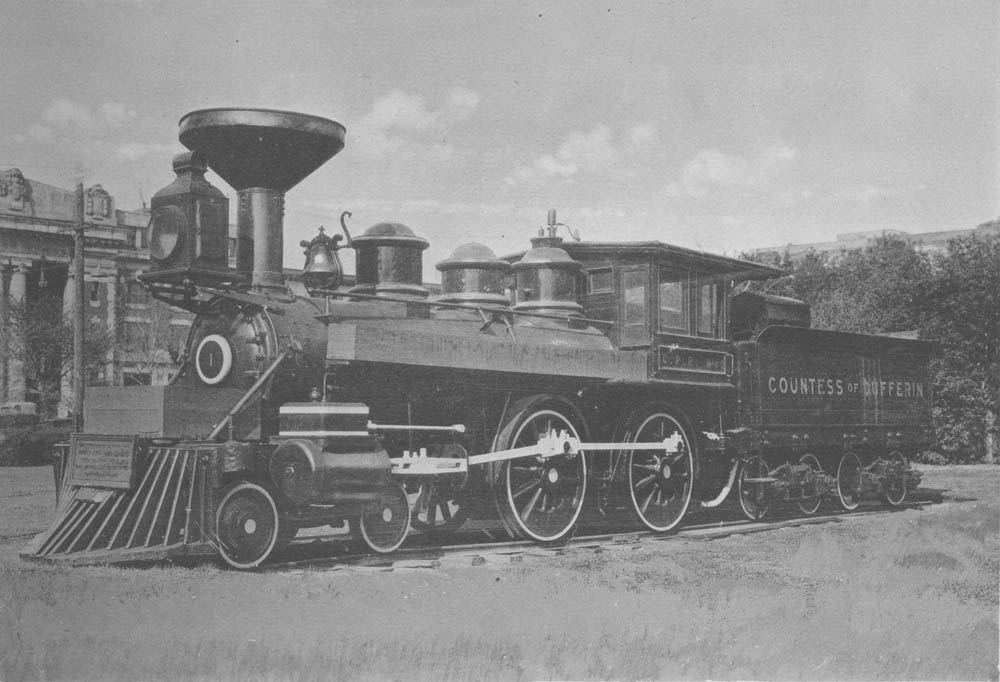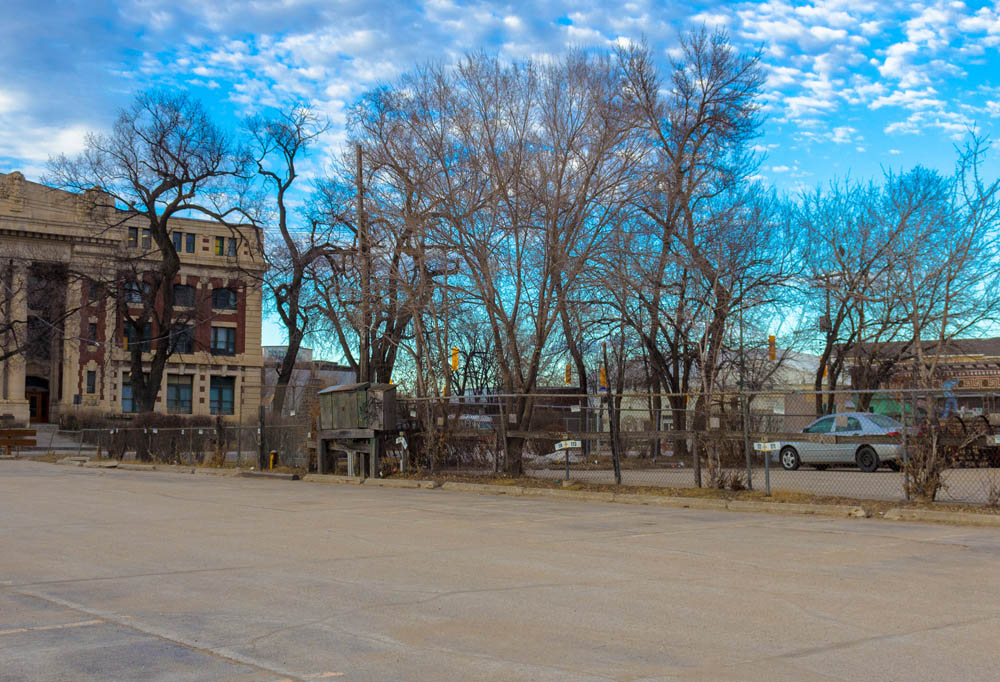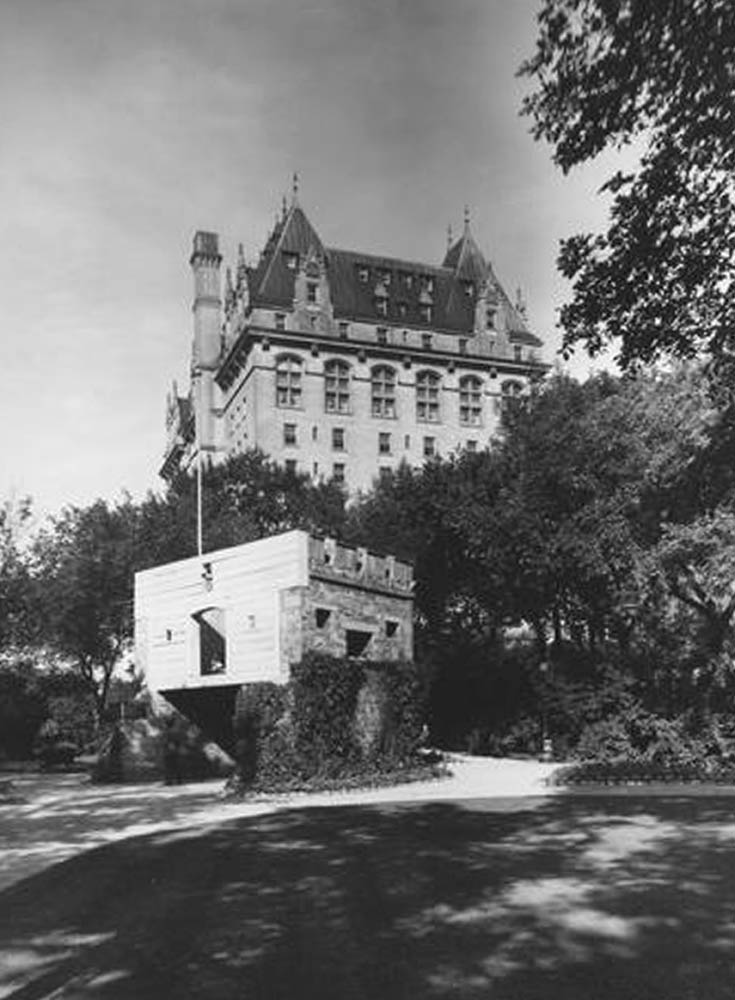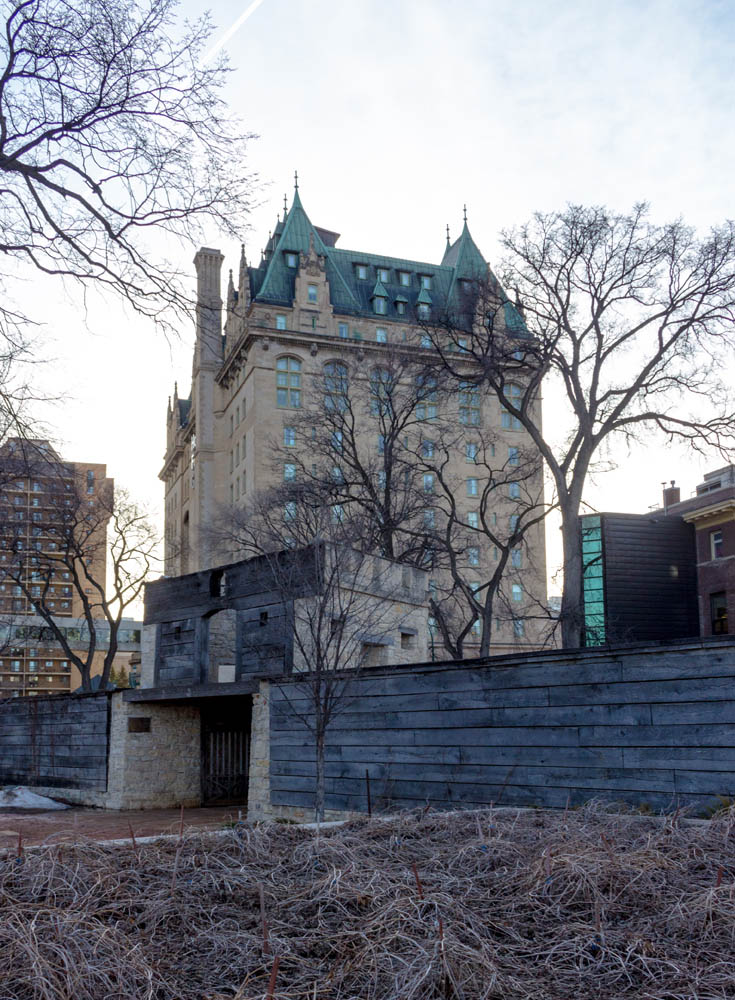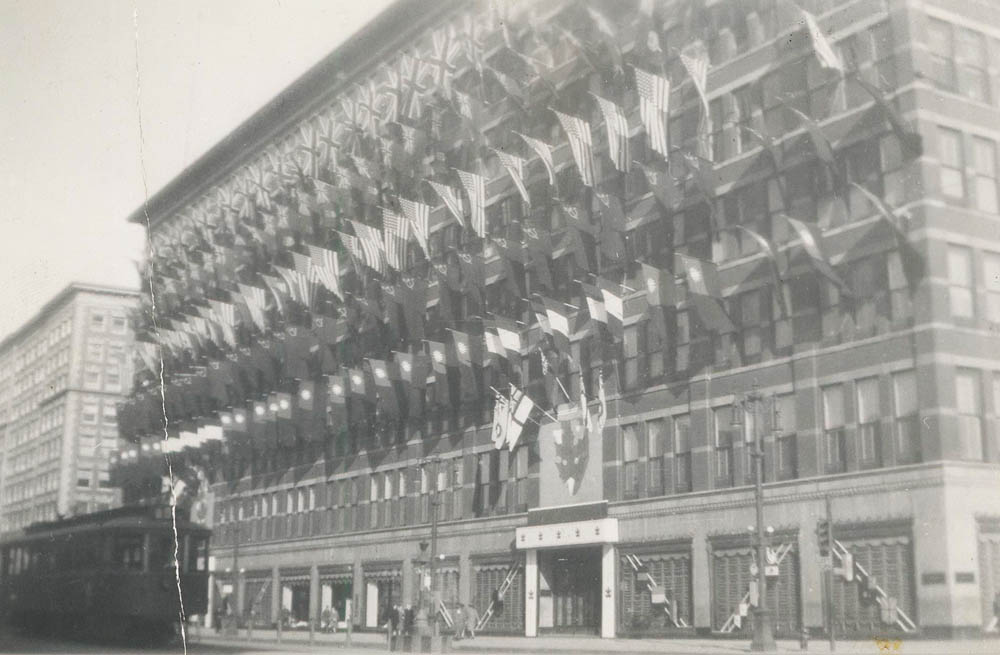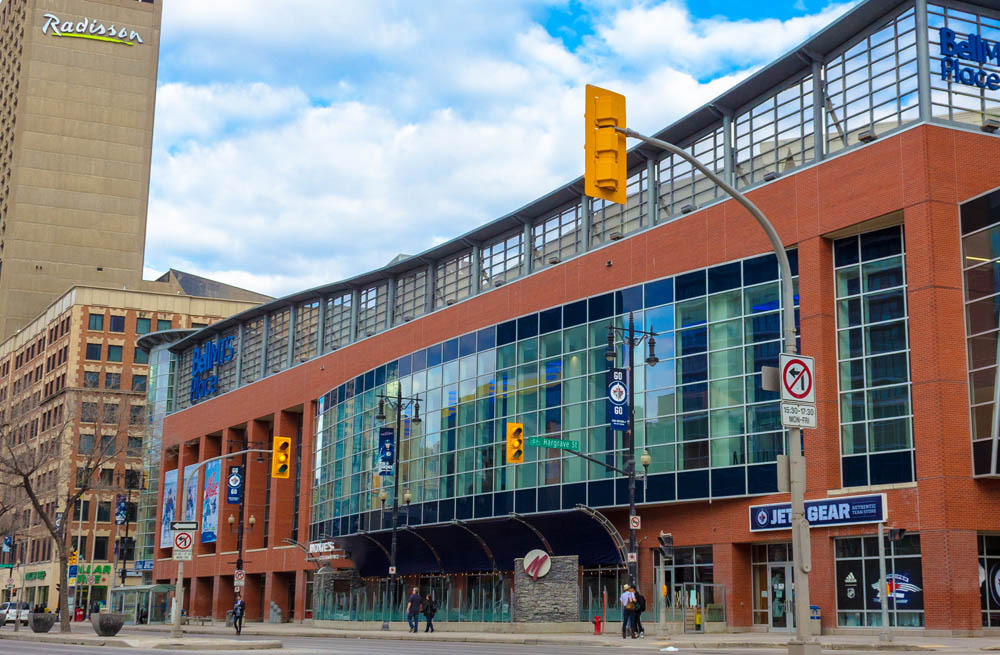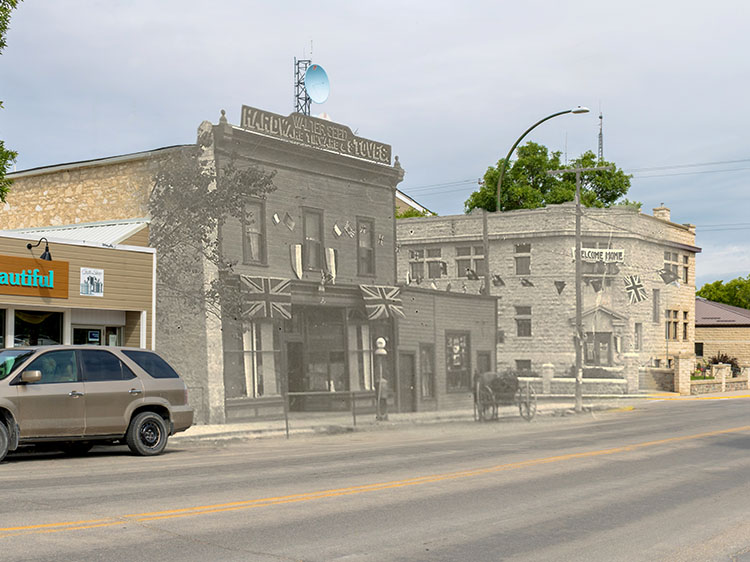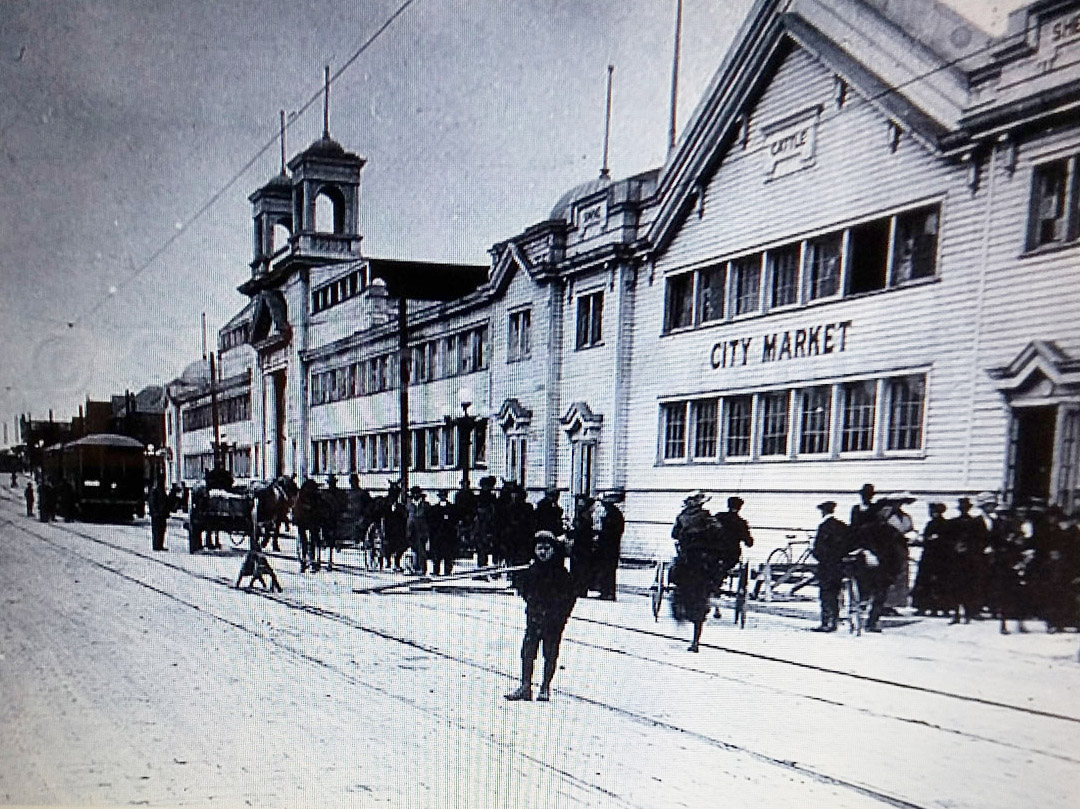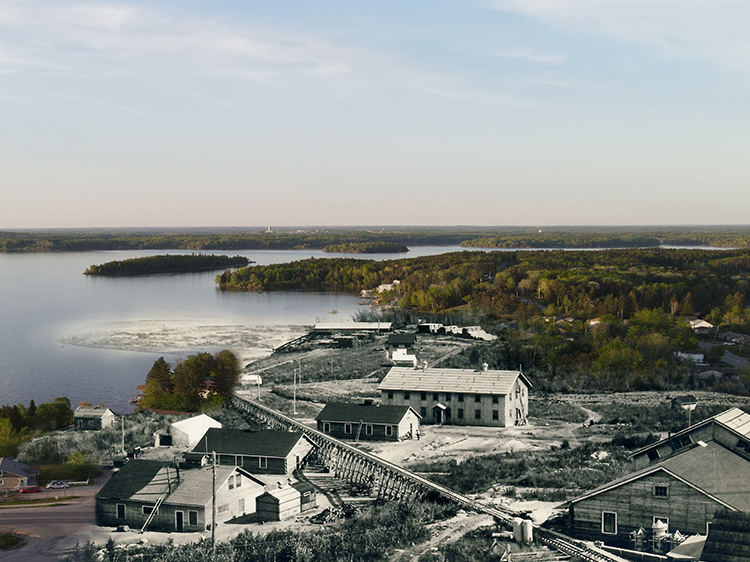Partner City
Winnipeg
Chicago of the North
Winnipeg grew up around the gathering place at the Forks between the Red and Assiniboine Rivers. When Manitoba joined Confederation in 1870 it sparked a tremendous population boom that lasted until the early 20th Century and made Winnipeg the first city of the Canadian prairies. Winnipeg is a city with an exciting history of rebellion, reform, commerce, and culture. The city is host to dozens of fascinating historic buildings.
This project is a partnership with Heritage Winnipeg. We also owe thanks to the generous support of Travel Manitoba, the Exchange BIZ, and the Fort Garry Hotel.
We respectfully acknowledge that Winnipeg is on Treaty 1 territory, and is the traditional territory of Anishinaabeg, Cree, Oji-Cree, Dakota, and Dene Peoples, and the homeland of the Métis Nation.
Tours
Bullseye of the Dominion
The Boomtown Era 1870-1912
The Challenge of Modernity
Turmoil and Reform 1913-1945
Explore
Winnipeg
Stories
Interned at Fort Osborne
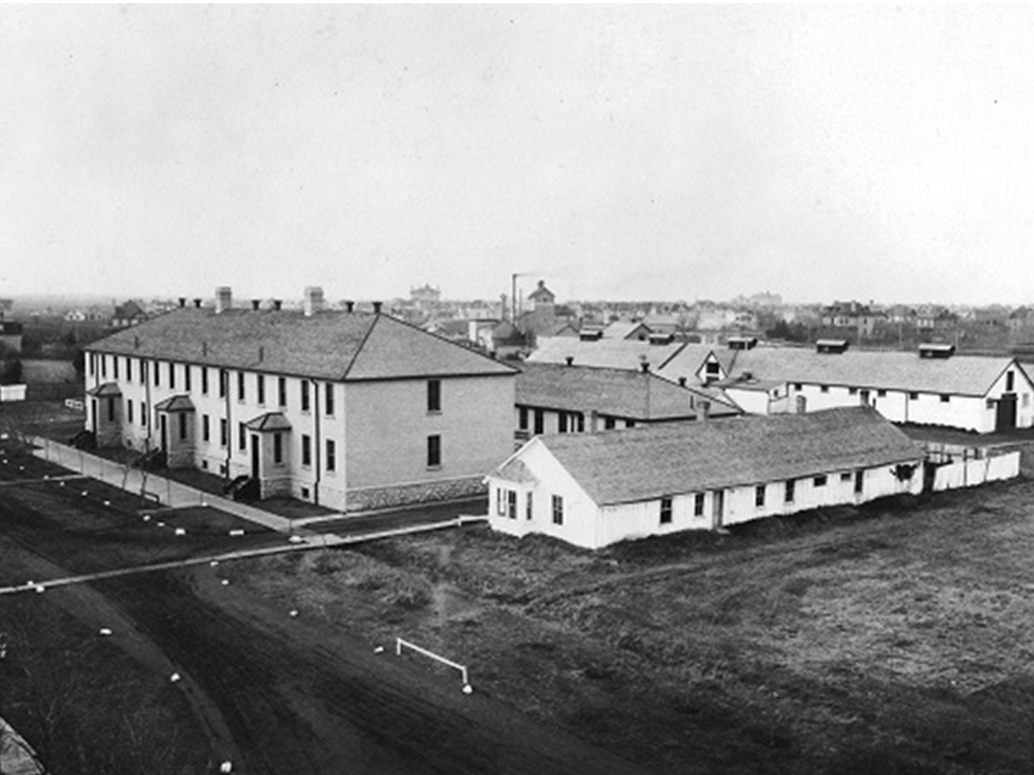
Ukrainian Canadian Civil Liberties Assoc.
Story Location
Fort Osborne was located on the grounds of the Manitoba Legislature between 1873 and 1917. During the first years of the First World War, the fort was used as a receiving station for 'enemy aliens.'
Starting in 1914, the Canadian government reclassified all immigrants from enemy nations as "enemy aliens," a status that stripped them of virtually all their civil rights. Any who were suspected of disloyalty were interned, along with enemy aliens who were homeless. The majority of the internees were poor men of Ukrainian or other nationalities who had immigrated from the Austro-Hungarian Empire.
At that time a large number of Ukrainian men lived in Winnipeg, many of them working at the massive railway yards on the north side, or for the City of Winnipeg as street cleaners or construction labourers. When the war broke out they immediately came under suspicion, and were required to register with the police and report regularly, while carrying special identification papers with them at all times.
The receiving station set up at Fort Osborne was the first destination for enemy aliens that had been arrested in Winnipeg and the surrounding area. In most cases they would be sent on to remote forced labour camps in Alberta, British Columbia, Ontario or Quebec.
As the number of aliens being arrested was winding down by 1916, the receiving station was shut down. Fort Osborne itself was relocated, to make way for construction of the provincial legislature.
* * *
Kerri Parnell's Art Exhibit Pause in Plight
Winnipeg-born artist Kerri Parnell created a moving art exhibit exploring the story of Canada's First World War Internment Operations.
A virtual tour of the exhibit can be taken at her site at: https://www.kerriparnell.com
One set of paintings is called Old Eyes. Kerri describes the works:
"Between 1914 and 1920, 8,579 “enemy aliens” were incarcerated, among them women and children, as reported by Major-General Sir William D. Otter, the Officer Commanding these internment operations for the Department of Justice. The paintings in this series depict Ukrainian, Serbian, Bulgarian, Armenian, and Croatian children. The affected communities included Ukrainians, Germans, Croatians, Hungarians, Armenians, Bulgarians, Czechs, Alevi Kurds, Jews, Ottoman Turks, Poles, Romanians, Serbians, Slovaks, and Slovenes. Most of those interned were civilians. With each child wearing traditional clothing from their respective homeland, Old Eyes examines the lineage of trauma that resonates within future generations who bear the burden of shame of what happened. It serves as a reminder, that in some circumstances, differences are still not celebrated in Canada today."
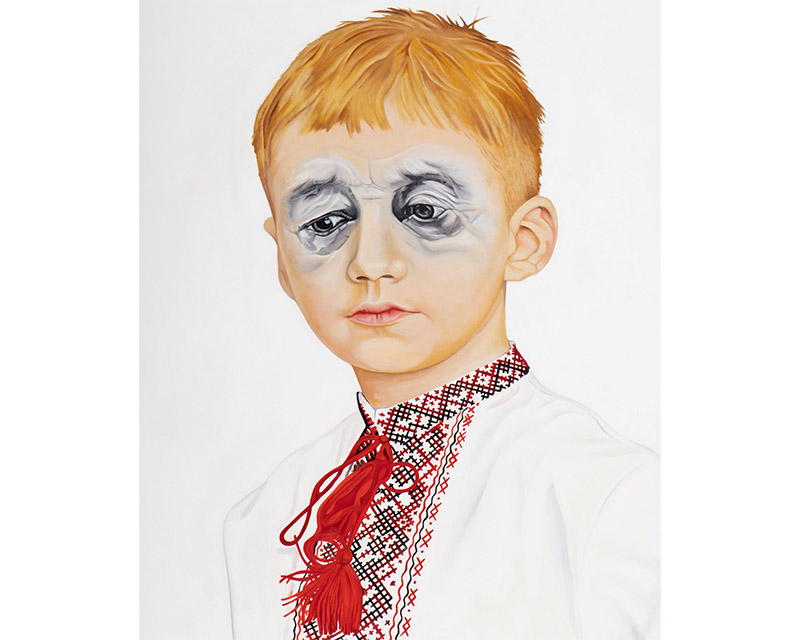
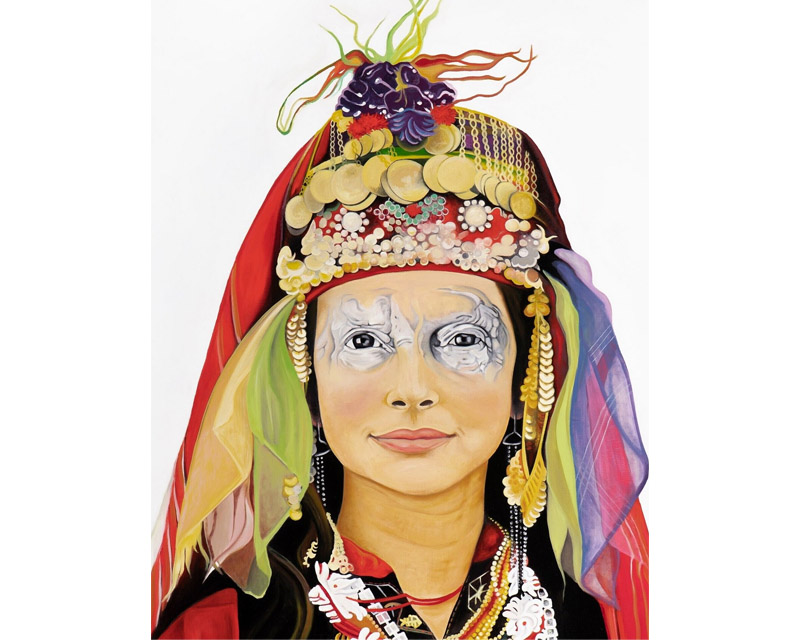


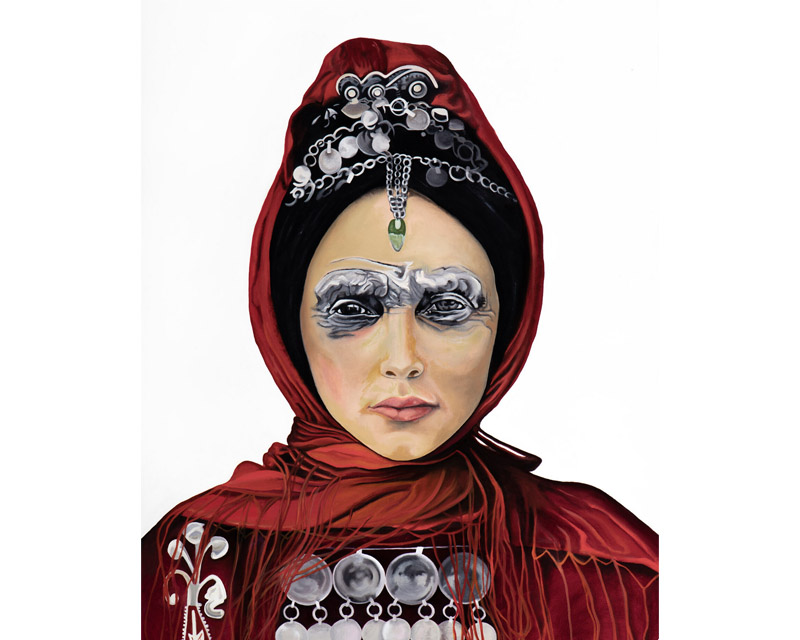
The full exhibit Pause in Plight, is currently touring art galleries around Canada. Visit Kerri's website at https://www.kerriparnell.com to see her other works, take a virtual tour of the exhibit, and purchase prints.
Then and Now Photos
Ojibwa Tipis at the Forks
Virtual Heritage Winnipeg 06-113
1858
Ojibwa people have erected their tipis at the Forks, a type of housing perfectly suited to the harsh conditions of the prairies.
Early Winnipeg
Virtual Heritage Winnipeg 00-078
1870
A view of how the "mushroom patch" of early Winnipeg, located at Main and Portage, looked like from Fort Garry.
Sleighs on Main St
Virtual Heritage Winnipeg 00-101
1882
People mill about in a snow-covered Main Street during the winter of 1882. The City Hall at the end of the block, which doubled as a 250-seat theatre, would soon be demolished and replaced by the impressive 'gingerbread' City Hall.
A Dog Sled Team
1900
A man poses with his dog team and sled by the old gate of Fort Garry. The sled is labeled Norway.
Businesses on Main
Virtual Heritage Winnipeg 00-135
1903
A view of the west side of Main. Only a handful of buildings survive.
Bankers Row
Virtual Heritage Winnipeg 00-140
1905
Looking south on Main Street towards some of the banks that gave the strip its moniker.
The YMCA
Winnipeg Archives CA COWA C13-P00006-97
1905
A postcard view of the YMCA Building on Portage Ave.
The Heart of Town
Virtual Heritage Winnipeg 00-149
1905
A fantastically busy day on Main and Portage.
Woman on the Corner
Virtual Heritage Winnipeg 00-159
1907
A woman stands on the corner of Main and Bannatyne.
Funeral at the Cathedral
Virtual Heritage Winnipeg 07-083
1915
A funeral procession for Archbishop Louis Phillippe Adelard Langevine leaves St. Boniface Cathedral.
Busy Sidewalk
Virtual Heritage Winnipeg 01-069
1915
People on a busy Main Street during the First World War.
Specials on the March
Winnipeg Archives CA COWA C13-P00001-22
1919
A large group of 'specials' march down Portage Ave during the General Strike of 1919.
North on Main Street
Virtual Heritage Winnipeg 01-076
1928
A streetcar trundles past the Union Bank Tower, seen at left. The tower is the oldest surviving skyscraper in Canada.
View of the Legislature
Virtual Heritage Winnipeg 02-223
1928
Looking past the new Hudson's Bay department store down Memorial Boulevard towards the Legislature.
A View Down Portage
Virtual Heritage Winnipeg 02-386
1920s
Looking east on Portage Ave towards Main Street from Carlton during the roaring '20s. Winnipeg's commercial centre of gravity was shifting to this area from Main Street at the time.
Fort Garry Gate & Hotel
Virtual Heritage Winnipeg 04-268
1930
The Fort Garry Hotel looming over the old gate of Fort Garry. The fort itself was dismantled in the 1880s and only the gate remains.
Countess of Dufferin
Winnipeg Archives CA COWA C13-P00023-83-13
1930s
The first locomotive to arrive in Winnipeg in 1878, the Countess of Dufferin, has been preserved and put on display outside the CPR station.
Fort Garry Gate & Hotel (2)
Winnipeg Archives CA COWA C13-P00002-46
1930s
The Fort Garry Hotel looming over the old gate of Fort Garry. The fort itself was dismantled in the 1880s and only the gate remains.
VE Day Decorations
Winnipeg Archives CA COWA C13-P00015-79
1945
The Eaton's store on Portage has been decked out with flags and bunting to celebrate the end of World War II in Europe.


